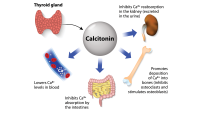Nurse knowledge ensures a rapid response.
- A ruptured ectopic pregnancy is the leading cause of maternal death in the first trimester.
- A ruptured ectopic pregnancy is a surgical emergency.
- If diagnosed early, an ectopic pregnancy can be managed in an outpatient setting.
History and assessment
Ms. Thomas’s medical history includes no previous pregnancies, surgeries, or sexually transmitted disease. Her vital signs remain consistent with a slight decrease in BP to 114/68 mmHg and continued pain with movement and nausea. The provider orders nothing by mouth.
Getting Covid Vaccine Won’t Hurt Pregnancy Chances; Getting Covid Could
Nausea and vomiting in pregnancy: Rethinking the term “morning sickness”
Lab results include human chorionic gonadotropin (HCG) 3,225, hemoglobin (Hgb) 13 g/dL, and hematocrit 39%. Urinalysis is negative. After reporting the patient’s current vital signs and labs to the OB/GYN provider, the nurse, Robert, starts an I.V. of normal saline and administers I.V. ondansetron 8 mg for nausea.
When Ms. Thomas returns to her room after the transvaginal ultrasound, she describes her pain as 7/10 and that it’s localized to the right side of her abdomen with referred right shoulder pain. She also says she feels faint when she sits up. While lying down, her BP is 95/57 mmHg and her HR is 117 bpm; when sitting, her BP is 82/44 mmHg and her HR 125. Robert calls the rapid response team (RRT).
Suspecting a ruptured ectopic pregnancy, Robert starts a second I.V. with a 16-gauge catheter, brings the hemorrhage trauma cart to the room, activates the massive transfusion protocol, and prepares the patient for transfer to the OR. Ms. Thomas’s husband stays at the bedside for emotional support.
Outcome
Due to the patient’s hemodynamically unstable condition (she has 1,500 mL of blood in the abdomen), the surgeon performs a laparotomy/salpingectomy for a right-sided ruptured ectopic pregnancy rather than a laparoscopic salpingostomy (fallopian tube preservation). After she’s stabilized in the PACU, Ms. Thomas’ Hgb is 6.1. She’s transfused with one unit of packed red blood cells when she returns to the OB/GYN unit for recovery.
Education
Ruptured ectopic pregnancy is the leading cause of maternal death during the first trimester and accounts for 4% to 6% of all pregnancy-related deaths. Most patients with an ectopic pregnancy have abdominal pain and vaginal bleeding.
When diagnosed early, ectopic pregnancy can be medically managed in an outpatient setting. The preferred method is pharmacologic treatment using methotrexate along with serial HCG lab testing. Patients eligible for pharmacologic treatment include those who are hemodynamically stable and have an HCG <5,000. In addition, no fetal cardiac activity should be evident with an ectopic mass <3 to 4 cm. A ruptured ectopic pregnancy presents an imminent danger of hemorrhagic shock. Key findings in a deteriorating patient include increased abdominal pain, weakness, dizziness, syncope with position change, and orthostatic vital signs.
Some young healthy pregnant patients have massive internal bleeding without an elevated HR or low BP, so nurses should take serial vital signs. Robert’s swift assessment and initiation of the RRT mediated this life-threatening event.
*Names are fictitious.
Marjorie Young is an associate professor at Radford University in Radford, Virginia.
American Nurse Journal. 2023; 18(1). Doi: 10.51256/ANJ012324
Key words: ectopic pregnancy, hemorrhagic shock, surgical emergency
References
American College of Obstetricians and Gynecologists. Guidelines for Perinatal Care. 8th ed. Washington, DC: ACOG; 2017.
Borhart J. Approach to the adult with vaginal bleeding in the emergency department. UpToDate. September 7, 2022. uptodate.com/contents/approach-to-the-adult-with-vaginal-bleeding-in-the-emergency-department
Domino FJ. The 5-Minute Clinical Consult 2019. 27th ed. Philadelphia, PA: Wolters Kluwer; 2019.
Hendriks E, Rosenberg R, Prine L. Ectopic pregnancy: Diagnosis and management. Am Fam Physician. 2020;101(10):599-606.
Hollier A. Clinical Guidelines in Primary Care. 4th ed. Lafayette, LA: Advanced Practice Education Associates; 2021.
Norwitz ER. Overview of the etiology and evaluation of vaginal bleeding in pregnancy. UpToDate. May 18, 2022. uptodate.com/contents/overview-of-the-etiology-and-evaluation-of-vaginal-bleeding-in-pregnancy
Simpson KR, Creehan PA. Perinatal Nursing. 5th ed. Philadelphia, PA: Wolters Kluwer; 2020.
Tsakiridis I, Giouleka S, Mamopoulos A, Athanasiadis A, Dagklis T. Diagnosis and management of ectopic pregnancy: A comparative review of major national guidelines. Obstet Gynecol Surv. 2020;75(10): 611-23. doi:10.1097/OGX.0000000000000832
Tulandi T. Ectopic pregnancy: Choosing a treatment. UpToDate. May 17, 2022. uptodate.com/contents/ectopic-pregnancy-choosing-a-treatment
Tulandi T. Ectopic pregnancy: Clinical manifestations and diagnosis. UpToDate. June 8, 2022. uptodate.com/contents/ectopic-pregnancy-clinical-manifestations-and-diagnosis



















1 Comment. Leave new
a small reading but to the point learning…